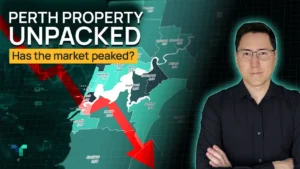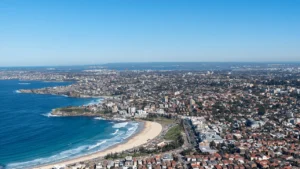Has the Market Peaked?
Perth’s property market has experienced remarkable growth since 2020, outpacing every other capital city until now, but recent data suggests the pace of growth may be slowing. This analysis unpacks whether Perth’s market is past its prime or if there’s still price growth ahead by examining supply and demand dynamics, price trends, and rental market conditions across Greater Perth.
Supply and Demand Analysis
Supply of housing stock in Greater Perth has been trending lower from its peak in 2020, currently sitting at 12-year lows. Simultaneously, demand has risen from its 2020 low point to reach 18-year highs. This creates a market where demand significantly outweighs supply.

Key Supply and Demand Indicators Further Clarify the Undersupply:
- Inventory levels (months of stock) are at 18-year lows of less than 1.0 month at current demand levels
- Median days on market sits at just 11 days, slightly up from the 9-day low recorded in 2024
While we’re beginning to see an increasing trend in days on market, 11 days remains extremely low by historical standards. Both metrics indicate Greater Perth is significantly undersupplied with housing.

Price Growth Trends Show a Slow Down in the Last Two Months
Since Perth’s market returned to positive growth territory in October 2020, the median house price has increased by $281,000 over a 4.5-year period—an average annual increase of approximately 11%.
The annual growth rate peaked recently at almost 24% and has begun moderating to the recently recorded annual growth rate of 21.9%. However, this remains about three times the long-term national average of 7%. Even if this growth rate eventually returns to 0% over the coming months, Perth house prices are still increasing over that period, albeit at a potentially slower pace.

Looking at the median house price over different time intervals (12, 6, and 3 months) provides additional perspective. In an evolving market, the median house price over 3 months offers more recent insights but with increased volatility, whilst the 12-month view provides more stable values but with greater time lag.
Currently, the 3-month median house price is higher than the 12-month measure, but has been moving sideways for approximately 5 months—a potential indicator that Perth’s market is starting to soften.

Breaking down the market by price segments (low, median, and upper) reveals another layer of insight. Unlike some Australian markets where recently many upper price segments are stagnating while lower segments are thriving, Perth has seen significant increases across all price segments since 2020.

Perth’s Rental Market is Very Undersupplied
The rental market in Greater Perth has experienced a substantial surge since 2020, with rents increasing by 42.9% over the past three years.

Annual rental growth rates peaked in January 2024 at 20% and have been moderating since. However, rental growth in Perth recently recorded an annual growth rate of 10%—over four times the current Australian inflation rate of 2.4%. This indicates the severity of rental housing undersupply in Perth.

Perth currently maintains the highest rental yield of any Australian capital city. Although yields have declined from a peak of 5% in mid-2024 to the current 4.5%, this remains significantly higher than Sydney’s 2.7%—the lowest yield among capital cities.

Market Analysis by Local Government Area
In our video series we unpack all these market metrics down to the city council level, with heatmaps (such as the one below) to help you understand how the Perth market varies by location.

Check out the video link before to get a fuller picture of the Greater Perth Housing Market:
Key Takeaways for Investors:
- Perth’s property market is slowing down from peak growth rates of 20-24%
- Annualizing the latest quarterly growth rates suggests Perth will still continue to grow 8% to 10% over the next 12 months (IF current trends continue)
- Supply indicators remain extremely tight around most of Greater Perth, with inventory at 1 month of stock or less, and median days on market around 10-12 days
- The rental market shows annual growth of 10% (compared to 2.4% inflation) with Perth maintaining the highest capital city rental yields at 4.5%
- Population growth is forecast at 1.8% annually over the next five years, requiring 93,000 new homes
- Current building approval levels are insufficient to meet projected demand, suggesting Perth will remain undersupplied for the foreseeable future






